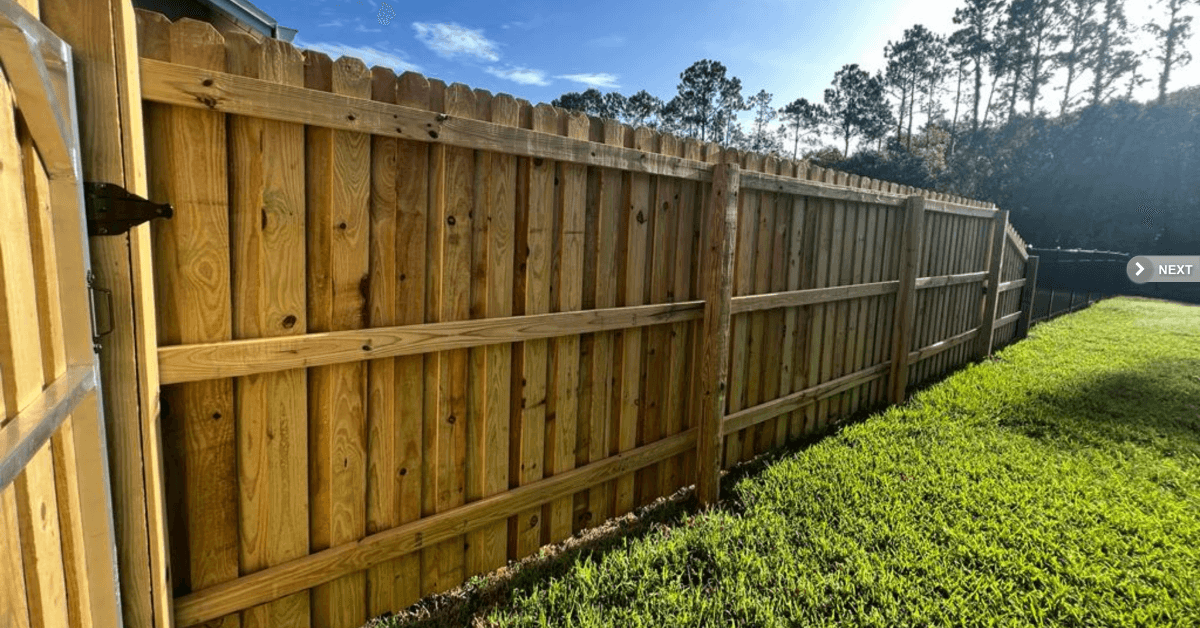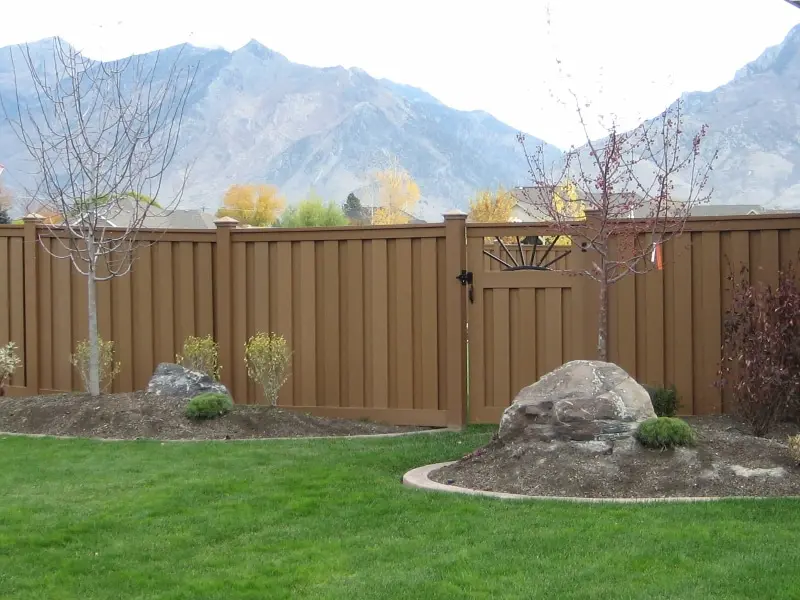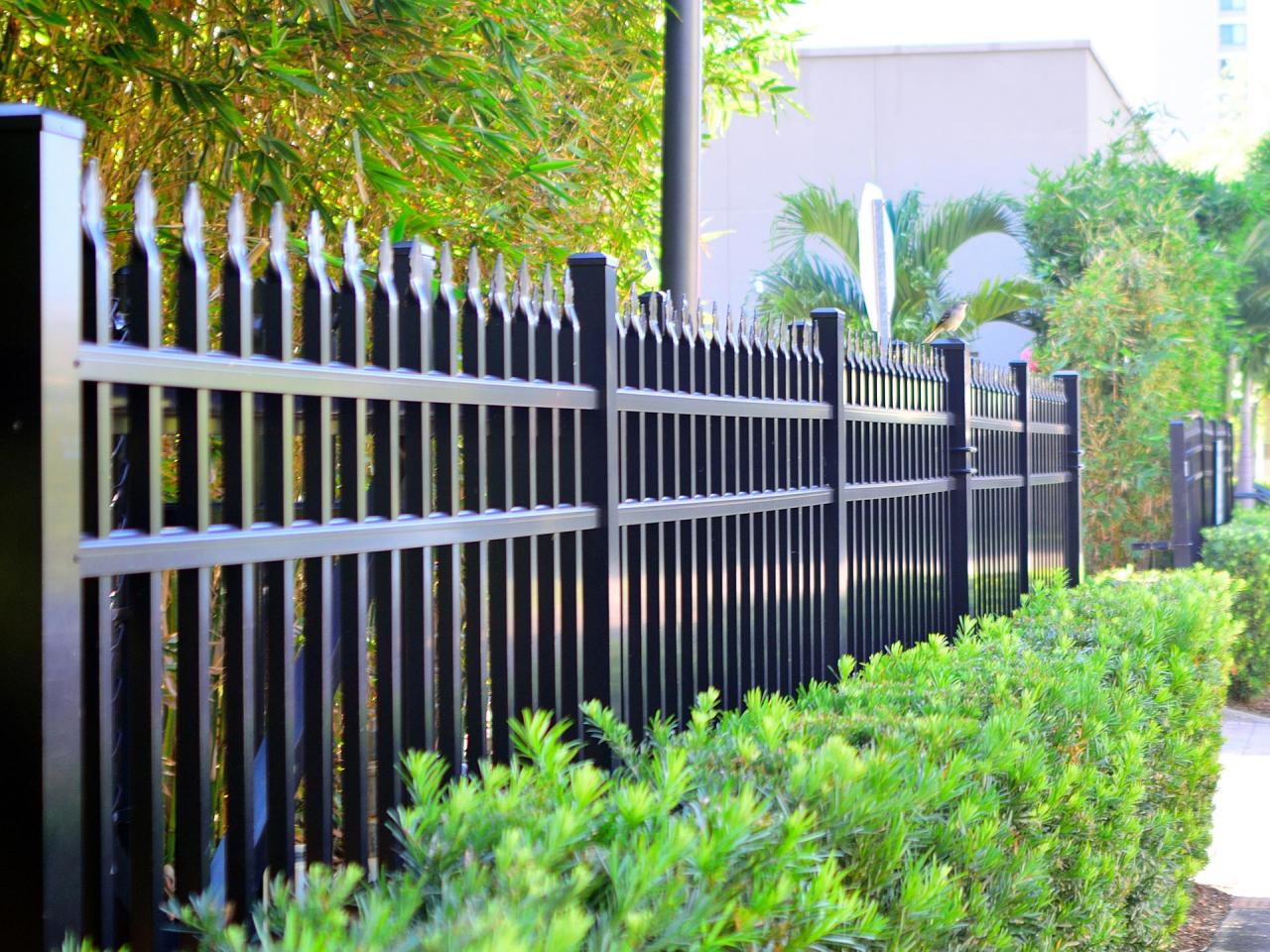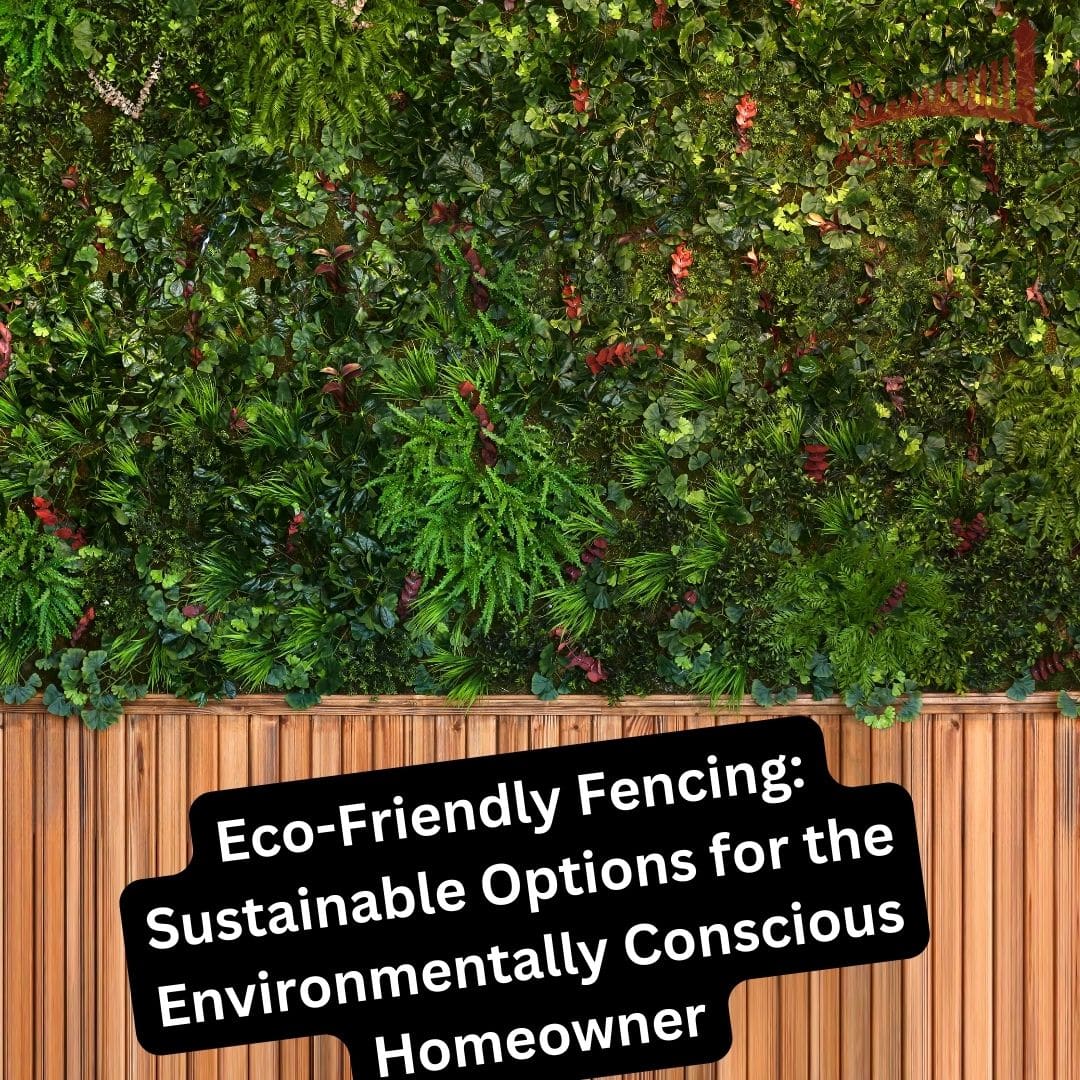Environmentally Friendly Fencing

Environmentally friendly fencing offers a compelling alternative to traditional fencing materials, presenting a sustainable and aesthetically pleasing solution for property boundaries. This exploration delves into the diverse range of eco-conscious options available, examining their manufacturing processes, environmental impacts, cost-effectiveness, and design possibilities. From the durability of recycled plastic to the living artistry of a green fence, we will uncover the benefits and considerations associated with each choice, empowering you to make an informed decision that aligns with both your environmental values and your landscaping goals.
We will compare various materials such as bamboo, recycled plastic, reclaimed wood, and living fences, analyzing their sustainability features, durability, and cost. Further investigation will cover installation methods, long-term environmental benefits, and potential drawbacks. The aim is to provide a comprehensive overview, enabling readers to confidently select the most suitable environmentally friendly fencing for their specific needs and preferences.
Environmentally Friendly Fencing: A Comprehensive Guide
Choosing environmentally friendly fencing offers a multitude of benefits, from reducing your carbon footprint to enhancing the aesthetic appeal of your property. This guide explores various sustainable fencing materials, their manufacturing and installation processes, environmental impacts, cost-effectiveness, and design considerations, providing a comprehensive overview for informed decision-making.
Types of Environmentally Friendly Fencing Materials

Source: elemental. green
Several sustainable materials offer eco-conscious alternatives to traditional fencing. This section compares five prominent options: bamboo, recycled plastic, reclaimed wood, living fences, and rammed earth.
| Material | Sustainability Features | Durability | Cost |
|---|---|---|---|
| Bamboo | Rapidly renewable, carbon-negative, low water usage | Moderate to high, depending on species and treatment | Moderate |
| Recycled Plastic | Made from post-consumer plastic waste, diverting material from landfills | High, resistant to rot and insects | High |
| Reclaimed Wood | Reduces demand for newly harvested timber, preserving forests | Variable, depending on wood type and condition | Moderate to High |
| Living Fences (e.g., Hawthorn, Black Locust) | Provides habitat, reduces erosion, carbon sequestration | High, with proper maintenance | Low to Moderate (initial cost) |
| Rammed Earth | Utilizes readily available local materials, low embodied energy | High, durable,e and long-lasting | Moderate to High (labor intensive) |
Bamboo sourcing involves sustainable harvesting practices, ensuring regrowth. Recycled plastic fencing manufacturing processes involve melting and molding recycled plastics. Reclaimed wood sourcing focuses on salvaged timber from demolition projects. Living fences require careful plant selection and maintenance. Rammed earth requires the sourcing of appropriate soil and construction expertise.
A lifecycle assessment visual would be a bar graph comparing each material. The x-axis would represent the materials (Bamboo, Recycled Plastic, Reclaimed Wood, Living Fence, Rammed Earth). The y-axis would represent the carbon footprint (in kg CO2e) and resource depletion (measured in a standardized unit, such as embodied energy). Each material would have two bars, one for carbon footprint and one for resource depletion, allowing for a direct visual comparison of their environmental impact throughout their life cycle. For example, Bamboo would likely show a low carbon footprint and low resource depletion compared to Recycled Plastic, which would have a higher carbon footprint during manufacturing but a lower one during its use and disposal phases. Reclaimed wood would show lower impacts than newly harvested wood. Living fences would demonstrate very low impacts overall, while Rammed Earth’s impact would be dependent on the sourcing and transportation distances of the materials used.
Manufacturing and Installation Processes

Source: multiscreensite.com
This section details the manufacturing and installation processes of selected environmentally friendly fencing materials, emphasizing environmentally conscious practices.
Recycled Plastic Fencing Manufacturing: The process involves collecting and sorting post-consumer plastic waste, cleaning and shredding the material, melting it down, and extruding it into fence panels. Environmentally conscious practices include using renewable energy sources for the melting process and minimizing waste during production.
Living Fence Installation:
- Site preparation: Clear the area and prepare the soil.
- Plant selection: Choose suitable species based on climate and soil conditions. Consider native plants for enhanced biodiversity.
- Planting: Plant seedlings or cuttings at appropriate spacing.
- Watering and maintenance: Regularly water and prune plants to encourage growth and shape.
- Support: Provide temporary support if needed to help establish the plants.
Bamboo vs. Traditional Wood Fencing Installation: Bamboo fencing installation is generally simpler and faster than traditional wood fencing, requiring less heavy machinery and fewer specialized tools. This translates to reduced energy consumption and emissions. However, bamboo may require additional treatments for durability, potentially offsetting some environmental benefits.
Environmental Benefits and Impacts
Choosing environmentally friendly fencing offers numerous long-term environmental benefits compared to traditional options. However, it’s important to acknowledge potential drawbacks.
Long-term benefits include reduced carbon emissions, reduced landfill waste, and enhanced biodiversity. Drawbacks may include transportation emissions associated with material sourcing and end-of-life disposal challenges, depending on the material. For example, the transportation of recycled plastic fencing from a manufacturing facility could have a greater carbon footprint than sourcing locally produced bamboo.
| Material | Manufacturing Footprint | Transportation Footprint | End-of-Life Footprint |
|---|---|---|---|
| Bamboo | Low | Moderate (dependent on distance) | Low (biodegradable) |
| Recycled Plastic | Moderate | Moderate (dependent on distance) | Low to Moderate (recyclable) |
| Reclaimed Wood | Low | Moderate (dependent on distance) | Low (can be reused or repurposed) |
| Living Fence | Very Low | Negligible | Negligible (biodegradable) |
| Rammed Earth | Low | Low (local materials) | Negligible (biodegradable) |
Cost-Effectiveness and Longevity

Source: ashleefence.com
The initial and long-term costs of environmentally friendly fencing vary depending on the material and installation complexity. Longevity also varies, influencing overall cost-effectiveness.
| Material | Initial Cost | Long-Term Maintenance |
|---|---|---|
| Bamboo | Moderate | Moderate |
| Recycled Plastic | High | Low |
| Reclaimed Wood | Moderate to High | Moderate to High |
| Living Fence | Low | Moderate (pruning and maintenance) |
| Rammed Earth | Moderate to High | Low |
While some environmentally friendly options may have higher initial costs, their longer lifespan and lower maintenance requirements can lead to significant long-term savings compared to traditional materials that require frequent replacement. For example, a living fence, while requiring ongoing maintenance, may last for decades with minimal intervention, offering superior cost-effectiveness over a frequently replaced wooden fence.
Aesthetic Considerations and Design, Environmentally friendly fencing

Source: vilofence.com
Environmentally friendly fencing can be aesthetically pleasing and functional. This section explores design considerations for different materials.
Bamboo fencing offers a natural, rustic look, suitable for various landscape styles. Recycled plastic fencing comes in a variety of colors and styles, allowing for greater design flexibility. Reclaimed wood offers unique character and texture. Living fences create a natural, dynamic barrier that blends seamlessly with the surrounding environment. Rammed earth fences offer a robust, earthy aesthetic, suitable for contemporary or traditional designs.
Integrating environmentally friendly fencing into landscape designs depends on property size and style. For smaller properties, a living fence or bamboo fencing might be more suitable, while larger properties could accommodate a combination of materials or more extensive rammed earth structures. A living fence can be incorporated into a naturalistic garden design, acting as a backdrop for other plantings, creating a layered and visually appealing border.
A landscape design incorporating a living fence might feature a mix of flowering shrubs and evergreen species, creating a colorful and textured barrier throughout the year. The fence could be integrated with pathways, patios, and other hardscape elements, creating a cohesive and aesthetically pleasing outdoor space. The plants could be chosen to attract pollinators and beneficial insects, enhancing the ecological value of the landscape.
FAQ Compilation
What is the lifespan of a living fence compared to traditional wood fencing?
A living fence, with proper care, can last for decades, potentially outliving traditional wood fencing, which typically requires replacement every 10-15 years. However, living fences require ongoing maintenance.
Are there any specific permits or regulations for installing environmentally friendly fencing?
Permits and regulations vary by location. Check with your local authorities to ensure compliance before installation.
How do I dispose of environmentally friendly fencing materials at the end of their lifespan?
Disposal methods depend on the material. Recycled plastic fencing can often be recycled, while reclaimed wood might be repurposed. Check with local waste management facilities for guidance.
Can I use environmentally friendly fencing in areas with high winds or extreme weather conditions?
The suitability depends on the material and its strength. Some materials, like certain types of bamboo or properly installed recycled plastic, can withstand harsh weather conditions. Consult with a fencing professional for advice.
What are the maintenance requirements for different types of environmentally friendly fencing?
Maintenance varies greatly. Recycled plastic requires minimal upkeep while living fences need regular pruning and watering. Reclaimed wood may need occasional staining or sealing.
Comments are closed.